The dream of hitting the open road in your own RV is powerful, but the reality comes with a steep learning curve that can cost you thousands. You’ve either just bought your first RV or are seriously considering it.
You’re worried about making a massive, expensive mistake that could ruin your travel plans or even put you in danger. Don’t worry, you are in the right place.
This guide breaks down the seven most common (and costly) RV beginner mistakes that new owners make. You’ll learn not just what they are, but get actionable new RV owner tips to avoid them.
This will save you time, money, and stress in 2025. Let’s get started.
1. Buying the Wrong RV for Your Needs
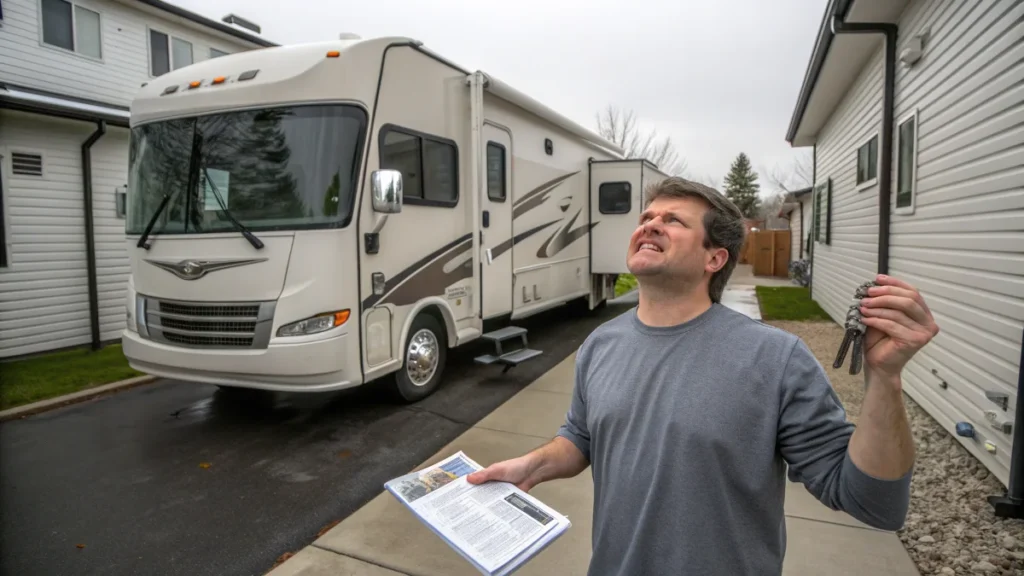
It’s easy to get swept up in the romance of that shiny 40-foot fifth wheel with the fireplace at an RV show. But choosing the wrong rig is one of the biggest costly RV errors you can make. It’s a decision that affects your budget, safety, and overall enjoyment. Before you sign any papers, make sure you’ve considered the most important factors.
For example, a family bought a beautiful 35-foot travel trailer, only to find it was too long for the campsites in their favorite National Parks. To avoid this, think hard about how you will actually use the RV.
- Check Tow Capacity: Is the RV’s weight safely under your vehicle’s maximum tow rating? An overweight trailer puts dangerous strain on your truck’s engine and brakes.
- Match the Layout to Your Lifestyle: Does the floor plan work for how you travel? A giant motorhome is a headache for short weekend trips, while a tiny camper will feel cramped for a large family.
- Consider New vs. Used: A new RV loses 20-30% of its value instantly, according to J.D. Power. A used rig can save you thousands, but always get it inspected by a professional to avoid hidden issues like water damage one of the most common RV problems.
RV Buyer’s Dashboard: Key Checks
Check Tow Capacity
Warning: Tow Capacity
Is the RV safely under your vehicle’s max tow rating? An overweight trailer puts dangerous strain on your truck’s engine and brakes.
Match Your Lifestyle
Lifestyle vs. Layout
A giant motorhome is a headache for short trips. A tiny camper feels cramped for a large family. Match the floor plan to how you travel!
New vs. Used
Cost Analysis
A new RV loses 20-30% of its value instantly! A used rig saves thousands, but get it inspected for hidden water damage.
2. Underestimating RV Weight and Overloading
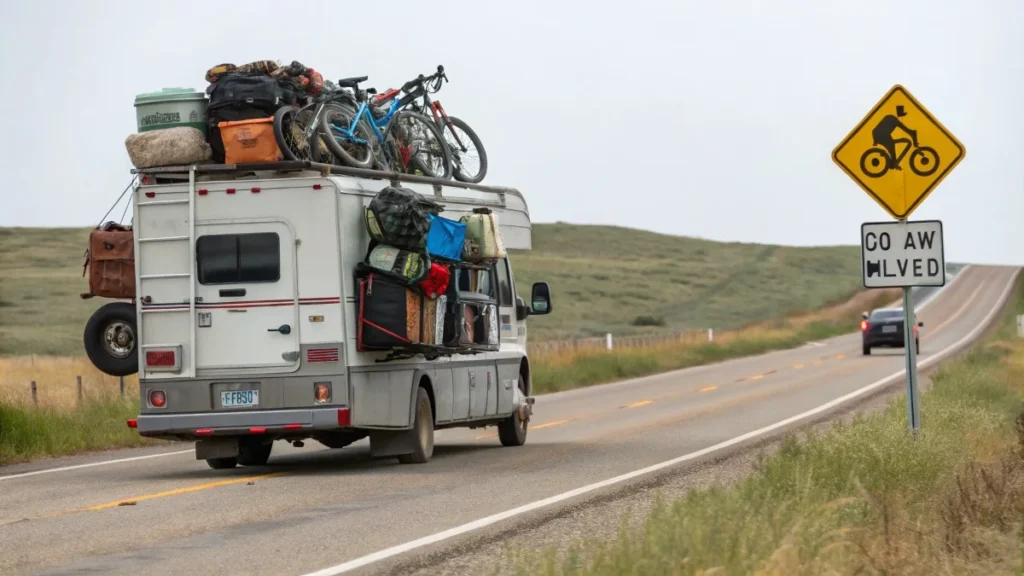
Weight is one of the most critical safety factors in RVing, yet it’s one of the most overlooked RV beginner mistakes. You have a limited amount of weight you can safely carry, and exceeding it is dangerous. An overloaded RV can lead to tire blowouts, brake failure, and even damage to the frame.
Remember, the “empty” weight listed by the dealer doesn’t include your stuff. A full 100-gallon freshwater tank alone adds over 800 pounds.
- Know Your Numbers: Find the sticker on your RV with key weight limits. The GVWR (Gross Vehicle Weight Rating) is the total safe weight of the RV, and the CCC (Cargo Carrying Capacity) is how much gear, water, and people you can add.
- Weigh Your Rig: Once packed for a trip, take your fully loaded RV to a CAT Scale (found at most truck stops). This is the only way to know your true weight and ensure you are safe.
- Don’t Forget the Small Stuff: Everything adds up. Your food, clothes, camping chairs, tools, and propane tanks all count towards your weight limit.
Make weighing your rig one of your top new RV owner tips to follow for every trip.
3. Neglecting Pre-Departure and Arrival Checklists
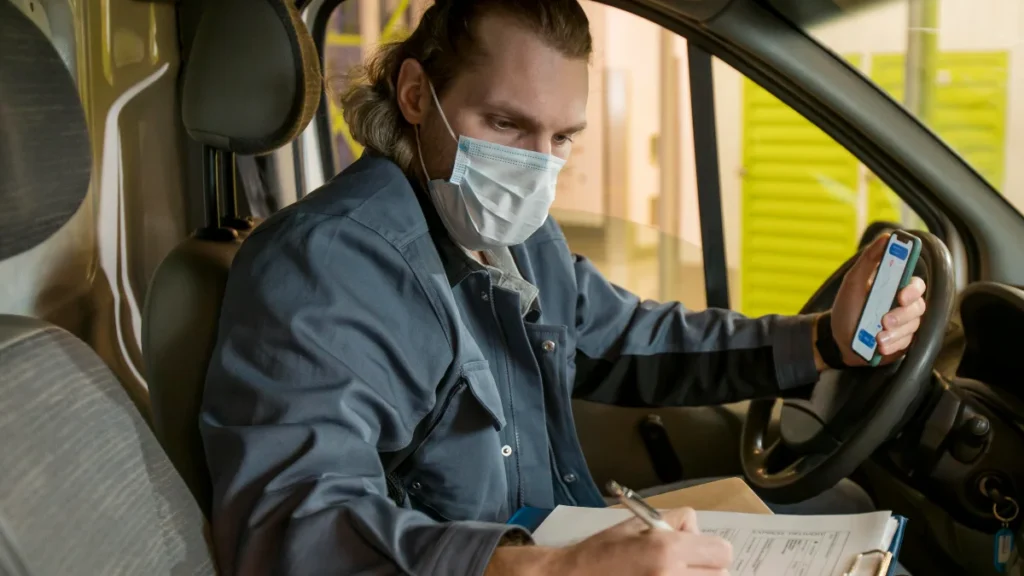
Forgetting simple steps before you move your RV can lead to thousands of dollars in damage. The solution is simple: use a checklist for every departure and arrival. No exceptions. A consistent routine is your best defense against preventable accidents.
Forgetting to lower the TV antenna is a classic, costly error that can rip a hole in your roof at the first low bridge. A simple checklist prevents this.
- The Departure Walk-Around: Before pulling out, always check your tires, hitch connection, and lights. Make sure slide-outs are in, storage bays are locked, and the antenna is down.
- Secure the Inside: A loose coffee pot or a can of soup can become a projectile during travel, causing damage. Make sure everything is put away and cabinets are latched.
- The Arrival Check: Before you back into a campsite, get out and look. Check for low-hanging branches, ensure the ground is level, and inspect the power pedestal for damage.
RV MISSION CONTROL: SAFETY CHECKS
Before hitting the road, perform a critical visual inspection:
- Check all tires for pressure & damage.
- Verify hitch connection and safety chains.
- Confirm all lights are operational.
- Ensure slide-outs are fully retracted.
- Lock all storage bays securely.
- Lower the antenna.
Prevent projectiles and damage during transit:
- Stow all loose items (coffee pots, cans, decor).
- Ensure all cabinets & drawers are latched.
- Check refrigerator/freezer door is secured.
- Remove items from countertops and tables.
- Secure any portable appliances.
Prioritize safety before maneuvering into your spot:
- Always exit the vehicle and scout the site.
- Check for low-hanging branches or obstructions.
- Verify the ground is sufficiently level for setup.
- Inspect the power pedestal for damage or hazards.
- Note the location of water/sewer connections.
These small habits prevent some of the most common RV problems. You can find great apps like RV Checklist to help.
4. Poor Route and Campground Planning
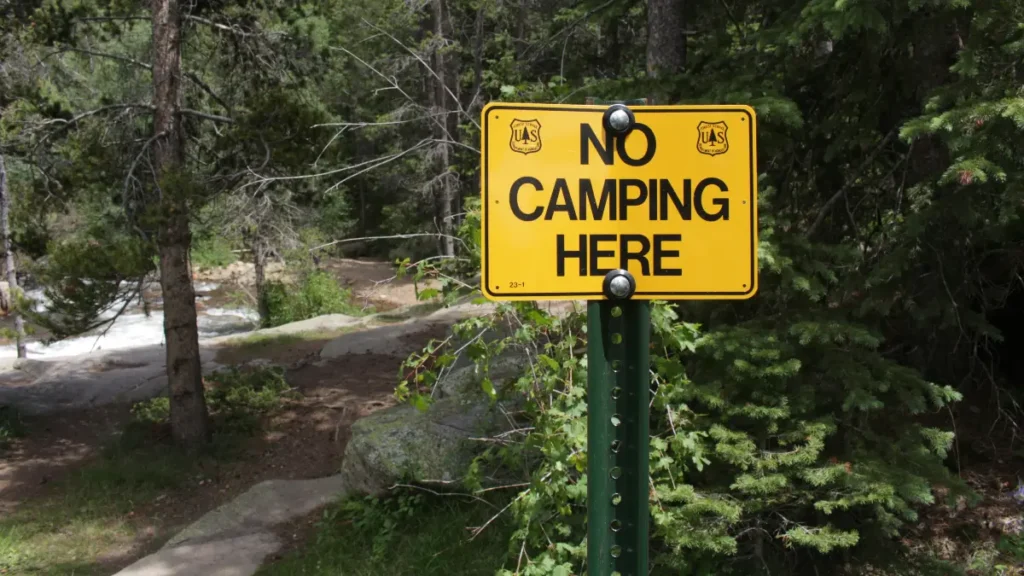
You cannot use Google Maps to plan your RV route. Car GPS does not warn you about low clearance bridges, steep mountain grades, or roads with propane restrictions. Using the wrong GPS is one of the most dangerous RV beginner mistakes.
The idea of just “winging it” and finding a campsite is also no longer realistic. According to The Dyrt’s 2024 Camping Report, 58% of campers reported difficulty finding an available site.
- Use an RV-Specific GPS: Invest in a Garmin RV unit or use an app like RV Trip Wizard. These tools plan routes based on your rig’s height and weight, keeping you safe.
- Book Campgrounds in Advance: Popular spots, especially in national parks, fill up 6 to 12 months ahead of time. Plan your stays well in advance to avoid sleeping in a parking lot.
- Budget for Stays: Nightly campground fees can be expensive. Use tools like Campendium and The Dyrt to find options in your budget, and look into alternatives like Harvest Hosts for unique, affordable stays.
Proper planning is one of the best new RV owner tips for a stress-free trip.
5. Mismanaging Water and Waste Systems
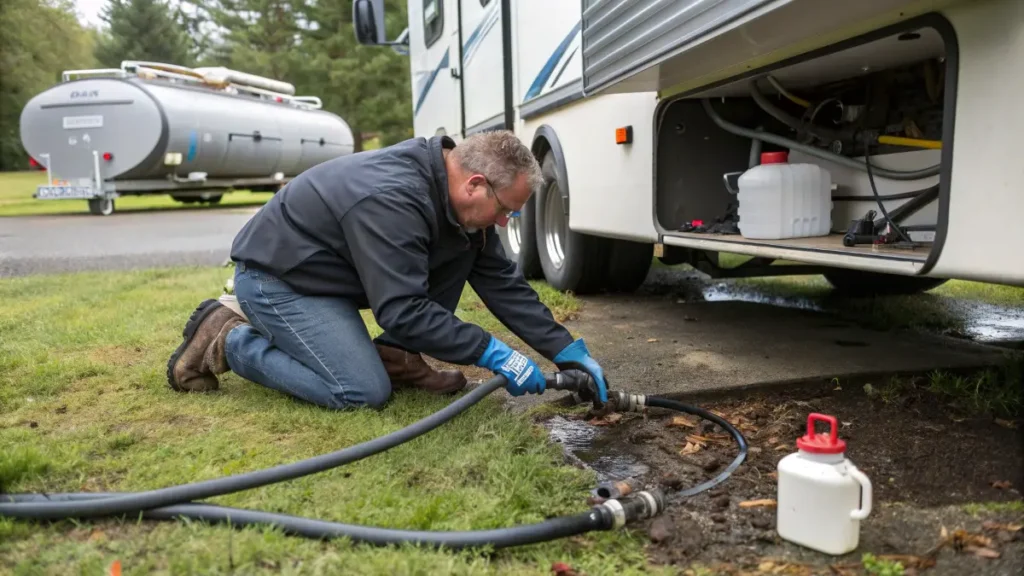
Let’s talk about the “dirty” side of RVing. Getting your water and waste systems wrong is not just gross; it can seriously damage your rig. A few simple rules can save you from messy and expensive situations.
A new RVer once left their black tank valve open at a full-hookup site, leading to a solid clog that cost over $300 to fix.
- Master the Black Tank: Always keep your black tank valve closed until it is at least two-thirds full. This allows solids to float and drain properly. Leaving it open creates clogs, one of the most unpleasant costly RV errors.
- Protect Your Plumbing: Always connect a water pressure regulator to the spigot before hooking up your hose. City water pressure can blow out your RV’s fragile plumbing lines.
- Keep Water Sources Separate: Use a dedicated, clean hose (usually white) for your fresh water tank. Never use the same hose you use for rinsing your sewer equipment. This prevents contamination and avoids common RV problems.
RV Systems: Critical Checks
Master the Black Tank
Always keep your black tank valve CLOSED until it is at least two-thirds full. This allows solids to float and drain properly. Leaving it open creates clogs, one of the most unpleasant and costly RV errors.
Protect Your Plumbing
Always connect a water pressure regulator to the spigot before hooking up your hose. High-pressure city water can easily blow out your RV’s fragile plumbing lines, causing a major flood.
Keep Water Sources Separate
Use a dedicated, clean hose (usually white) for your fresh water tank. NEVER use the same hose you use for rinsing your sewer equipment. This prevents dangerous contamination and keeps your drinking water safe.
6. Ignoring Essential Maintenance
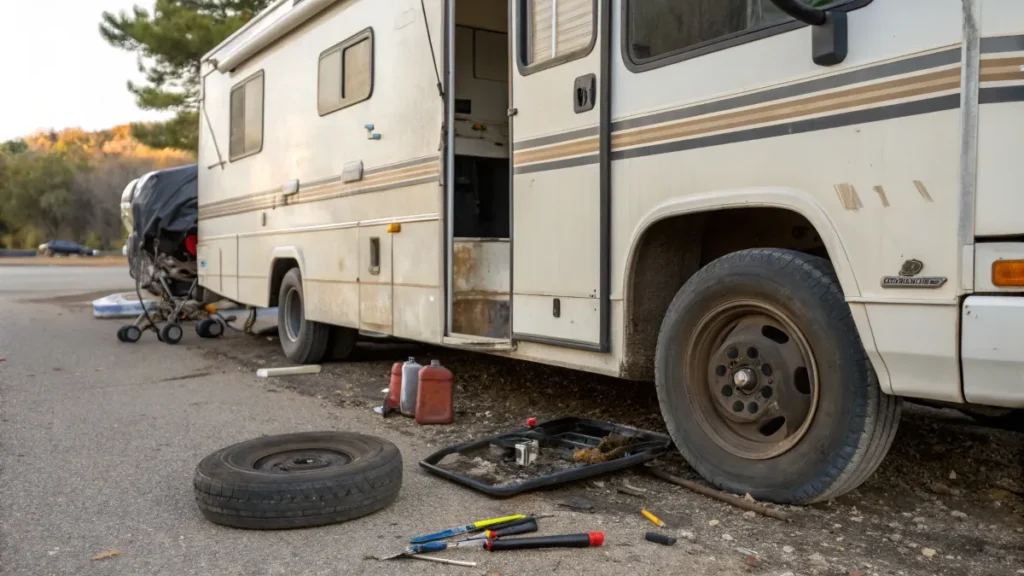
An RV is a house on wheels, and it requires regular maintenance to stay in good shape. Ignoring it is one of the most serious RV beginner mistakes. Proactive checks are much cheaper than reactive repairs.
Water damage is the #1 killer of RVs. Water damage repairs are extremely expensive costly RV errors, often running from $2,000 for a small fix to over $15,000 for major problems.
- Inspect Your Tires: RV tires often age out before they wear out due to sun damage. Check the date code on your tires and plan to replace them every 5-7 years, regardless of tread depth.
- Check All Seals Every 3-6 Months: The best way to prevent water damage is to inspect the sealant on your roof, windows, and slide-outs regularly. If you see a crack, fix it immediately with a product like Dicor Self-Leveling Lap Sealant.
- Maintain Your Batteries: If you have lead-acid batteries, check the water levels monthly and top them off with distilled water. This simple step can double their lifespan.
7. Lack of Driving and Parking Practice
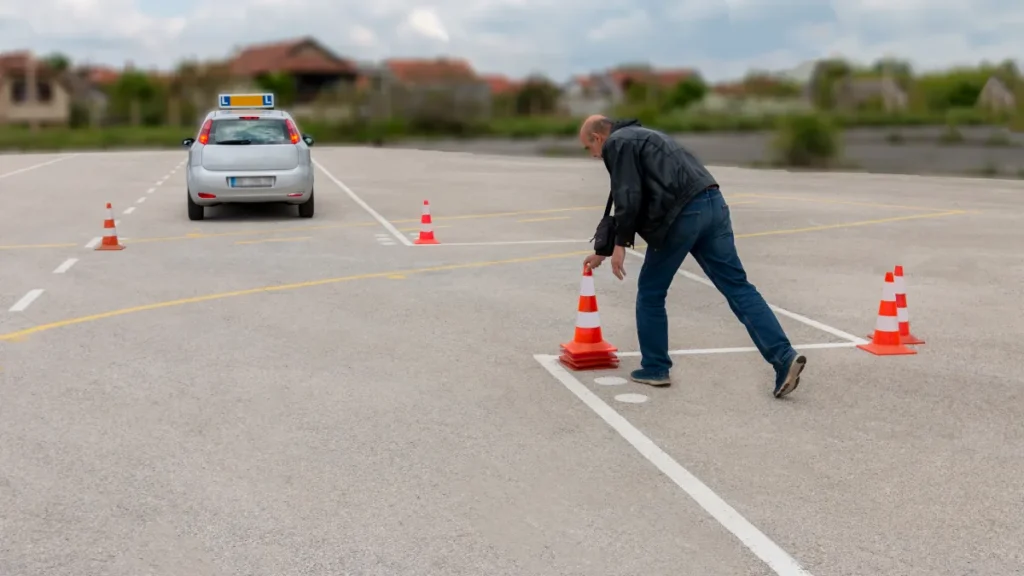
Driving a big rig for the first time is stressful. Do not make your first time in the driver’s seat a trip through a busy city. That small crunch you hear when backing up could be a $1,500 tail light assembly or a $3,000 hit to the campground’s power pedestal.
- Practice in a Parking Lot: Go to a large, empty parking lot and spend a few hours practicing. Learn how to make turns, back into spaces, and understand your RV’s “tail swing.”
- Use the G.O.A.L. Method: When parking, Get Out And Look. It’s not embarrassing; it’s smart. Check your clearance multiple times to avoid hitting obstacles.
- Work with a Spotter: Don’t rely only on mirrors and cameras, which have blind spots. Have a partner help you back in, using cell phones or walkie-talkies to communicate clearly.
A little practice provides the best new RV owner tips for building confidence and avoiding damage.
RV Driving School!
Learn the ropes like a pro (and avoid the bumps!)
Parking Lot Practice!
Hit a big, empty parking lot for hours. Master turns, backing up, and that tricky “tail swing”!
The G.O.A.L. Method!
When parking, Get Out And Look! Don’t be shy; check clearances repeatedly to avoid a CRUNCH!
Work with a Spotter!
Mirrors and cameras miss things. Have a partner guide you with clear communication (walkie-talkies are great!).

